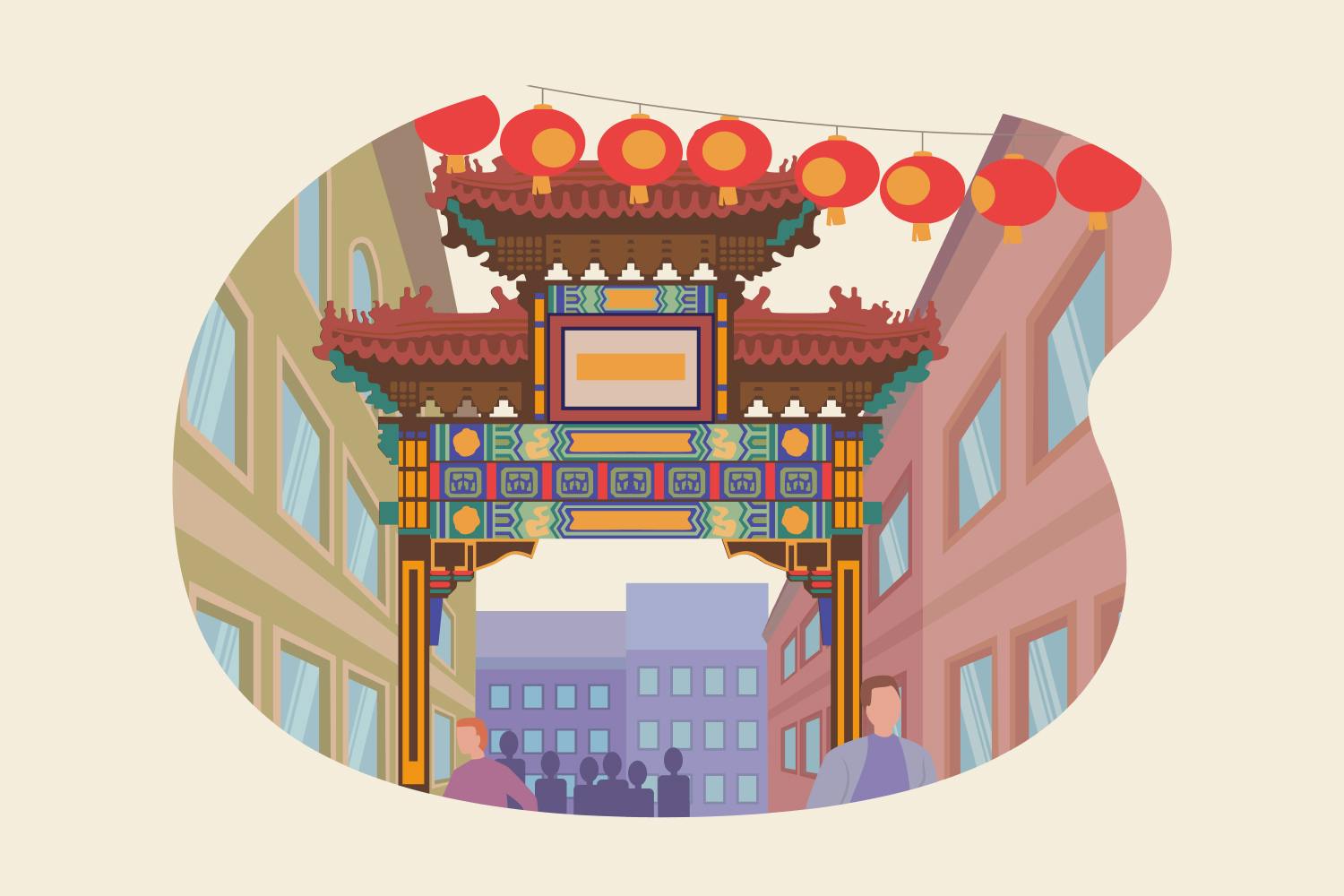From Mandarin to Cantonese: Exploring The Dialects and Main Languages In China

Contents
The China language diversity includes several hundreds of tongues and dialects spoken in various regions. Therefore, stating that the only language of China is Chinese is almost the same as stating that the only tongue spoken in Europe is European. In today’s article, we’ll explore the various dialects and different languages of the country, as well as their historical backgrounds and other essential information. So buckle up, and let’s dive right into it!
Main Languages in China: Overview of Chinese Linguistic Diversity
China’s linguistic field is rich and intricate, reflecting the country’s vast history, geographical expanse, and cultural depth. Mandarin Chinese, specifically the standard form, is the official language of China and serves as a lingua franca. However, beyond this tongue, there are numerous variations and dialects spoken by different ethnic groups across the country. Let’s explore the most common examples beyond the Chinese national language.
Sinitic (Chinese) languages.
- Mandarin is also known as “Putonghua” or “Guoyu,” meaning “common language” or “national language.” It’s based on the Beijing dialect and is the primary language taught in schools and used in government, media, and formal settings. However, it’s important to note that Mandarin itself encompasses various regional accents and nuances.
- Cantonese (Yue) is primarily spoken in the Guangdong province, Hong Kong, and Macau. It’s another prominent member of the Sinitic branch within the Sino-Tibetan language family. Cantonese has its own unique phonology, vocabulary, and grammar and is widely spoken in overseas Chinese communities.
- The Min languages are a group of dialects spoken in Fujian province and neighboring areas. They are part of the Sinitic branch of the Sino-Tibetan language family and include dialects like Min Dong, Min Nan (Hokkien), and Min Bei. Each has distinct linguistic features and cultural significance.
- Wu is spoken in the region around Shanghai and in Zhejiang, Jiangsu, and parts of Anhui provinces. It includes dialects like Shanghainese, known for its unique phonology and vocabulary.
Non-Sinitic languages.
- Tibetan is spoken in the Tibetan Autonomous Region and some parts of Qinghai, Sichuan, and Yunnan. It’s an official minority language in China and holds significant cultural importance for Tibetans. The Tibetan script, derived from Indic scripts, is used for writing.
- Uyghur is spoken in the Xinjiang Uyghur Autonomous Region in northwest China. It has Turkic roots and is written using an Arabic-based script. Uyghur culture and language have faced challenges due to government policies in the region.
- Zhuang is spoken in the Guangxi Zhuang Autonomous Region. It has several dialects and a unique writing system called Sawndip. It holds cultural significance and is an official minority language in China.
- Yi is spoken by the Yi people in Yunnan, Sichuan, Guizhou, and Guangxi provinces. It has multiple dialects and a unique syllabic script called Yi script or ‘Nuosu.’ It’s an important part of the Yi people’s cultural heritage.
- Hmong, also known as Miao, is spoken by the Hmong people in several provinces, including Guizhou, Yunnan, and Guangxi. It has various dialects and is traditionally a spoken language, though some writing systems have been developed.
We’ve mentioned only nine languages, but, of course, that’s not all! So, what is the language of China? There just can’t be only one answer! China is a diverse country that is home to different ethnic groups. Many of them actively work to safeguard their languages as a means of preserving their identities and cultural traditions. Language is a fundamental aspect of ethnic identity, and efforts to maintain and revitalize these tongues are crucial for safeguarding cultural heritage.
The Historical Evolution of Chinese Languages
Today, Mandarin Chinese is the language most used in China and one of the most widespread tongues worldwide. Yet, it wasn’t like that all the time. The historical evolution of Chinese languages is a journey spanning thousands of years, characterized by linguistic changes, regional variations, and the emergence of distinct dialects and tongues. So, without further ado, let’s explore the exciting history of Chinese.
Old Chinese (1,200 BCE – 3rd Century CE)
Old Chinese is the earliest known stage of the Chinese language, dating back to approximately 1,200 BCE. The primary source for understanding it is the ancient texts, including oracle bone and bronze inscriptions.
Key features of Old Chinese include:
- Most words were single syllables.
- Old Chinese had a tonal system, which laid the foundation for the tonal nature of many modern Chinese dialects.
- A limited set of consonants and vowels formed syllables.
This period marked the development of the first written characters and the refinement of linguistic structures. The Qin dynasty’s unification efforts in the 3rd century BCE led to standardization in writing and language, contributing to the establishment of a unified script.
9
Middle Chinese (3rd – 10th Century CE)
Middle Chinese represents a transitional period between Old and Modern Chinese languages. This phase witnessed significant phonological changes and marked the beginning of a more complex syllable structure.
Notable characteristics of Middle Chinese include:
- Shifts in consonants and vowels led to changes in pronunciation.
- Middle Chinese experienced a tonal split, giving rise to tonal variations in different dialects.
- Classical Chinese, based on the grammar and vocabulary of ancient texts, became the standard for formal writing.
This period is a pivotal phase, experienced significant phonological changes, leading to the creation of regional variations. Middle Chinese saw the emergence of tonal distinctions, the loss of final consonants, and the onset of a tonal system that characterizes many modern Sinitic languages today. This period serves as a crucial bridge between ancient and contemporary forms of the language.
Modern Chinese (10th Century CE – Present)
Modern Chinese comprises various branches and dialects, with Mandarin becoming the predominant language, especially after the establishment of the People’s Republic of China in 1949.
Key aspects of Modern Chinese include:
- The promotion of Mandarin as the standard language began during the Ming and Qing dynasties and was further reinforced by government policies in the 20th century.
- Efforts were made to standardize the writing system and pronunciation to promote uniformity across regions.
- Despite the dominance of Mandarin, numerous dialects and languages continue to thrive, preserving unique linguistic features and reflecting regional identities.
In modern times, the Chinese government actively promotes Mandarin as a unifying language, still acknowledging and preserving other dialects and minority tongues.
Minority Languages in China: Preservation and Challenges
Despite how many different languages are spoken in China, people of various ethnic groups still face some challenges due to the globalization of Mandarin and many other factors. Let’s explore some of the most common examples.
- Mandarin, as the official language, holds significant sway. There’s often pressure on ethnic minorities to learn this tongue for education and job opportunities, leading to a gradual decline in the use of their native languages.
- Many minority languages lack written scripts or have limited literary traditions, making documentation and preservation challenging. There’s a shortage of resources dedicated to language documentation, translation, and linguistic research.
- Migration to urban centers can result in the dilution of minority languages as younger generations prioritize learning dominant tongues for economic advancement, leading to language shift or loss.
- The prevalence of global media in the dominant language contributes to the gradual erosion of minority tongues, especially among the younger generation, who prefer consuming content in more widely used tongues.
Regardless of these issues, the Chinese government officially recognizes the importance of minority languages and takes some steps to preserve them. It includes the presence of bilingual education, cultural revival initiatives, linguistic research, etc. These concepts help to safeguard the cultural and historical heritage and allow people to speak different languages within the borders of the same country.
Learn the Official Language of China with Promova
Understanding the history behind a foreign language is an exciting way to expand your knowledge and learn something new. However, if you want to master the tongue, it is vital to focus on other factors, such as its vocabulary, grammar, etc. In this case, you might need some helpful resources to achieve your goals. Therefore, we are happy to introduce you to the Promova app – your one-stop solution for reaching fluency. Here are some benefits of the application worthy of your attention:
- convenient interface and user-friendly navigation to simplify your learning process;
- exciting interactive lessons created by language experts;
- bite-sized learning, allowing you to focus on vital aspects of the tongue instead of overwhelming amounts of materials;
- the ability to learn different languages, including English, Mandarin Chinese, Spanish, German, and many others;
- accessibility on various devices – Promova is available for both iOS and Android phones and tablets, so you can study anywhere and anytime you want.
The Promova application is a great choice for both beginners and experienced learners, as it offers tons of helpful materials based on your proficiency level. Install the app today, and begin your ultimate journey towards fluency!
Conclusion
So, how many languages are there in China? The simplest answer is a lot. Beyond Mandarin, which serves as the official language, there are over 100 tongues and dialects spoken by various ethnic groups across the country. This linguistic tapestry reflects China’s rich history, cultural complexity, and the coexistence of diverse ethnicities.
FAQ
Where is Mandarin spoken besides China?
Mandarin is spoken in various parts of the world due to the Chinese diaspora and influence. Outside of China, the language is notably spoken in Taiwan and Singapore. In Taiwan, it’s the primary language of the majority of the population. Singapore recognizes Mandarin as one of its official languages, alongside Malay, Tamil, and English, due to its large Chinese community.
What is the difference between Traditional Chinese and Simplified Chinese?
Traditional Chinese characters are the original forms of the characters used in Chinese writing. They are more complex and intricate, with a longer history, and are primarily used in regions like Taiwan, Hong Kong, and Macau. Simplified Chinese characters, introduced in mainland China in the mid-20th century, were streamlined versions of the traditional characters, aiming to increase literacy rates.
How many foreign languages are used in China, and what are they?
In terms of foreign languages spoken in China, English is by far the most widely spoken and taught. Its importance has grown significantly due to globalization, international business, and education. Russian might be spoken in regions bordering Russia, like Heilongjiang and Inner Mongolia, due to cross-border interactions.
What Chinese languages are widespread in the US?
Mandarin and Cantonese are among the most widespread Chinese languages in the US due to historical immigration patterns. Cantonese-speaking communities are prevalent in cities like San Francisco, New York, and Los Angeles. At the same time, Mandarin speakers can be found across the country, especially in areas with recent Chinese immigration.



Comments